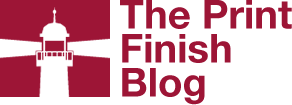A computer printer is a computer peripheral device that produces a hard copy (permanent human-readable text and/or graphics, usually on paper) from data stored in a computer connected to it. A printer is used to print anything that you want, like pictures or documents or data. They plug in where there is a USB slot (in modern printers), from there you can click print and the document is sent to the port where your document is printed. Today there are many different types of printers on the market that range from toner-based or ink-based.
Laser and LED Printers:
Though some small offices or departments could get by with a business-oriented inkjet, the standard office workhorse is a laser or LED printer. Each technology uses its light source to beam an image onto a rotating drum; the image attracts toner, and the toner then transfers from the drum onto paper though a quick baking process. Laser and LED printers are usually faster than inkjets and create precisely drawn text (as well as acceptable or better graphics). They are also more expensive to purchase, although their toner costs can be lower than the ink costs of an inkjet, depending on the model.
Inkjet Printers:
An inkjet printer squirts liquid ink through extremely small holes in a printhead to create an image. The primary reason to choose an inkjet printer is for the photo quality: Inkjets are still the best at blending colors smoothly. (The other purposes for which you’d want color output–invitations, flyers, brochures–turn out just as well with other printer technologies.
Snapshot Printers:
Snapshot printers are designed for photography, so typically they have a full complement of media card slots for your camera’s flash memory. Usually they also have a PictBridge port for connecting your camera with a cable. Some PictBridge ports also take USB flash drives; if that’s the case for the printer you’re considering, its specs should say so. Even if a single-function inkjet printer can handle photo output, it may not have the necessary slots or PictBridge connectivity. Since photo printers can function without a PC connection, they all have a color LCD screen for you to view and select photos for printing. The display will vary in size from model to model. A larger screen is more desirable for easier navigation and larger image previews, but you’ll also pay more for that benefit. A few displays are also touch-sensitive, an interface that feels more natural as you navigate on-screen options. By contrast, single-function inkjet models typically don’t have a display.
Wide-Format Printers:
Most printers print on letter- and legal-size paper, up to 8.5 inches wide. Wide-format printers can print on paper sizes up to 11 inches wide and 17 inches long (called tabloid or ledger, depending on orientation). If you want to print posters, or if you’d like to create a letter-size brochure with a fold in the middle (rather than stapled pages), a wide-format printer can do it for you. But such a printer will cost more and be naturally bigger and heavier than a regular-size model. Printing a bigger page will take longer, so engine speed and internal memory will be more important.
More from PC World
